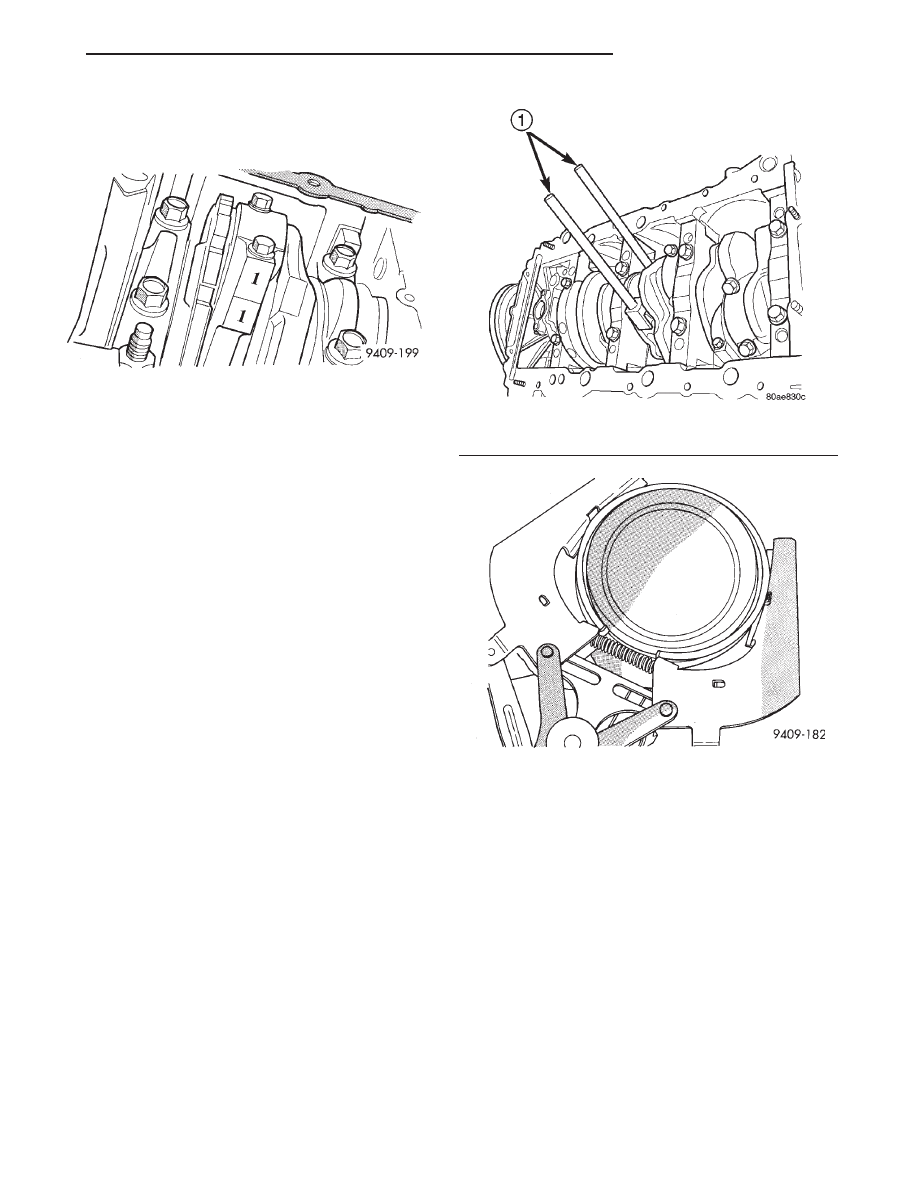Chrysler Stratus Convertible. Manual - part 396

(3) Using a permanent ink marker or scribe tool
mark the cylinder number on the side of the rod and
cap (Fig. 119) for identification.
(4) Pistons will have a stamping in the approxi-
mate location shown in (Fig. 118). These stamps will
be either a directional arrow or a weight identifica-
tion for the assembly. L is for light and H is for
heavy. These assemblies should all be the same
weight class. Service piston assemblies are marked
with a S and can be used with either L or H produc-
tion assemblies. The weight designation stamps
should face toward the timing belt side of the engine.
(5) Pistons and connecting rods must be removed
from top of cylinder block. Rotate crankshaft so that
each connecting rod is centered in cylinder bore.
(6) Remove connecting rod cap bolts Do not use
old bolts if reinstalling connecting rod.
(7) To protect crankshaft journal and fractured rod
surfaces, install Special Tool 8189, connecting rod
guides onto connecting rod (Fig. 120). Carefully push
each piston and rod assembly out of cylinder bore.
CAUTION: Care must be taken not to damage the
fractured rod and cap joint surfaces, as engine
damage many occur.
(8) Remove Special Tool 8189, connecting rod
guides and re-install bearing cap on the mating rod.
NOTE: Piston and rods are serviced as an assem-
bly.
PISTON RING—REMOVAL
(1) The identification mark on face of upper and
intermediate piston rings must point toward piston
crown.
(2) Using a suitable ring expander, remove upper
and intermediate piston rings (Fig. 121).
(3) Remove the upper oil ring side rail, lower oil
ring side rail and then oil ring expander from piston.
(4) Clean ring grooves of any carbon deposits.
PISTON RINGS—INSTALLATION
(1) Install rings with manufacturers identification
mark facing up, to the top of the piston (Fig. 122).
CAUTION: Install
piston
rings
in
the
following
order:
a. Oil ring expander.
b. Upper oil ring side rail.
c. Lower oil ring side rail.
d. No. 2 Intermediate piston ring.
e. No. 1 Upper piston ring.
f. Install the side rail by placing one end between
the piston ring groove and the expander. Hold end
firmly and press down the portion to be installed
until side rail is in position. Do not use a piston
ring expander (Fig. 123).
(2) Install upper side rail first and then the lower
side rail.
Fig. 119 Identify Connecting Rod to Cylinder
Fig. 120 Connecting Rod Guides—Typical
1 – SPECIAL TOOL 8189 CONNECTING ROD GUIDES
Fig. 121 Piston Rings—Removing and Installing
JX
2.0L SOHC ENGINE
9 - 57
REMOVAL AND INSTALLATION (Continued)